| August 28, 2008 |  |
MarsDaily Advertising Kit |
| Previous Issues | Aug 27 | Aug 26 | Aug 25 | Aug 22 | Aug 21 |
NASA's Mars Rover Opportunity Climbing Out Of Crater Pasadena CA (SPX) Aug 27, 2008
Pasadena CA (SPX) Aug 27, 2008NASA's Mars Exploration rover Opportunity is heading back out to the Red Planet's surrounding plains nearly a year after descending into a large Martian crater to examine exposed ancient rock layers. "We've done everything we entered Victoria Crater to do and more," said Bruce Banerdt, of NASA's Jet Propulsion Laboratory in Pasadena, Calif. Banerdt is project scientist for Opportunity and ... more Ice Cold Sunrise On Mars  Tempe AZ (SPX) Aug 27, 2008
Tempe AZ (SPX) Aug 27, 2008From the location of NASA's Phoenix Mars Lander, above the Martian arctic circle, the sun does not set during the peak of the Martian summer. This period of maximum solar energy is past -- on Sol 86, the 86th Martian day after the Phoenix landing, the sun fully set behind a slight rise to the north for about half an hour. This red-filter image taken by the lander's Surface Stereo ... more Dawn Advances Slowly  Pasadena CA (SPX) Aug 27, 2008
Pasadena CA (SPX) Aug 27, 2008The Dawn spacecraft continues to make good progress on its adventure to unlock scientific secrets hidden deep in the main asteroid belt, between Mars and Jupiter. Its path to that distant realm of the solar system is now bringing it closer to the Sun, and thanks in part to all the thrusting it has accomplished with its remarkable ion propulsion system, it has recently achieved its lowest speed ... more Seeing Mars In A Particle Of Dust  Moffett Field CA (SPX) Aug 27, 2008
Moffett Field CA (SPX) Aug 27, 2008NASA's Phoenix Mars Lander has taken the first-ever image of a single particle of Mars' ubiquitous dust, using its atomic force microscope. The particle -- shown at higher magnification than anything ever seen from another world -- is a rounded particle about one micrometer, or one millionth of a meter, across. It is a speck of the dust that cloaks Mars. Such dust particles color the ... more Phoenix Digs Deeper As Third Month Nears End  Tucson AZ (SPX) Aug 26, 2008
Tucson AZ (SPX) Aug 26, 2008The next sample of Martian soil being grabbed for analysis is coming from a trench about three times deeper than any other trench NASA's Phoenix Mars Lander has dug. On Tuesday, Aug. 26, the spacecraft will finish the 90 Martian days (or "sols") originally planned as its primary mission and will continue into a mission extension through September, as announced by NASA in July. Phoenix lander ... more |
mars-water-science
 meteor 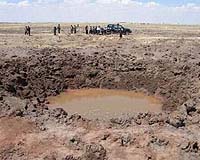 mars-phoenix  |
 Washington DC (SPX) Aug 21, 2008
Washington DC (SPX) Aug 21, 2008After receiving the highest number of votes cast by members of the Mars Society and the endorsement of the Steering Committee, Hill's concept to launch a microsatellite that will test artificial gravity generation techniques - which will be of immense value to the crew of a six-month flight to Mars - was named the winner of the MPC Saturday evening at the 11th Annual International Mars Society ... more Dress Rehearsal For Mars  Moffett Field CA (SPX) Aug 22, 2008
Moffett Field CA (SPX) Aug 22, 2008Before testing for life on other planets, it's useful to practice on barren areas of the Earth. One such place is Rio Tinto in Spain, where conditions are analogous to Mars. The water of that Spanish river is very acidic, similar to water scientists think may have once flowed on the martian surface. Also, chemical studies hint that rocks on Mars' Meridiana Planum plain have been moved by ... more Phoenix Mars Lander Explores Site By Trenching  Tucson AZ (SPX) Aug 22, 2008
Tucson AZ (SPX) Aug 22, 2008NASA's Phoenix Mars Lander scientists and engineers are continuing to dig into the area around the lander with the spacecraft's robotic arm, looking for new materials to analyze and examining the soil and ice subsurface structure. New trenches opened recently include the "Burn Alive 3" trench in the "Wonderland" digging area in the eastern portion of the arm's reachable workspace. Research ... more NASA to use shock-absorbers to fix shaking in new Ares rocket  Washington (AFP) Aug 20, 2008
Washington (AFP) Aug 20, 2008NASA say they will use shock-absorbers similar to those used in cars to fix a problem with heavy vibrations in the new Ares rocket, to give stronauts inside the Orion crew capsule a smoother ride. US space agency engineers have recommended a system employing spring-mounted weights and shock-absorbing tubes between the first and second stage of the rocket to rectify excessive vibrations. ... more |
mars-mers
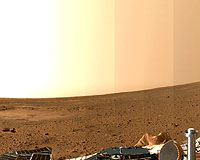 mars-phoenix 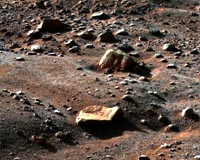 mars-general  |
 Tucson AZ (SPX) Aug 15, 2008
Tucson AZ (SPX) Aug 15, 2008NASA's Phoenix Mars Lander has taken the first-ever image of a single particle of Mars' ubiquitous dust, using its atomic force microscope. The particle -- shown at higher magnification than anything ever seen from another world -- is a rounded particle about one micrometer, or one millionth of a meter, across. It is a speck of the dust that cloaks Mars. Such dust particles color the Marti ... more First Test Of Welding Tool For Ares I Upper Stage  Huntsville AL (SPX) Aug 14, 2008
Huntsville AL (SPX) Aug 14, 2008NASA's Marshall Space Flight Center, in Huntsville, Ala., engineers made the first "official" weld with tools that will enable development of the upper stage of the Ares I rocket. For this historic moment, the engineers used tools that soon will aid in manufacture of major test hardware for the Ares I rocket, slated to carry human missions back to the moon, on to Mars and out into the solar syst ... more Water Ideas Are All Wet  Moffett Field CA (SPX) Aug 14, 2008
Moffett Field CA (SPX) Aug 14, 2008According to new research, old ideas about water behavior are all wet. Ubiquitous on Earth, water also has been found in comets, on Mars and in molecular clouds in interstellar space. Now, scientists say this common fluid is not as well understood as we thought. "Water, as we know it, does not exist within our bodies," said Martin Gruebele, a William H. and Janet Lycan Professor of Chemist ... more PSI Director Promotes 13-Planet Solar System  Columbia, Maryland (SPX) Aug 13, 2008
Columbia, Maryland (SPX) Aug 13, 2008Mark Sykes says that if a non-stellar object is massive enough to be round and orbits a star, it ought to be a planet. The key here is that once an object gets that big, important geophysical processes begin. Under this scenario, the smallest known planet in the solar system would be Ceres, the largest and most massive object in the asteroid belt between Mars and Jupiter. Ceres is less ... more
|
mars-phoenix
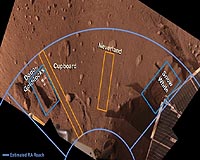 mars-general 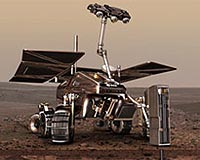 mars-phoenix 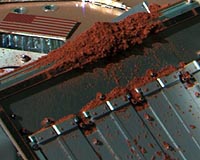 |
| Previous Issues | Aug 27 | Aug 26 | Aug 25 | Aug 22 | Aug 21 |
| The contents herein, unless otherwise known to be public domain, are Copyright 1995-2007 - SpaceDaily. AFP and UPI Wire Stories are copyright Agence France-Presse and United Press International. ESA Portal Reports are copyright European Space Agency. All NASA sourced material is public domain. Additional copyrights may apply in whole or part to other bona fide parties. Advertising does not imply endorsement, agreement or approval of any opinions, statements or information provided by SpaceDaily on any web page published or hosted by SpaceDaily. Privacy statement |